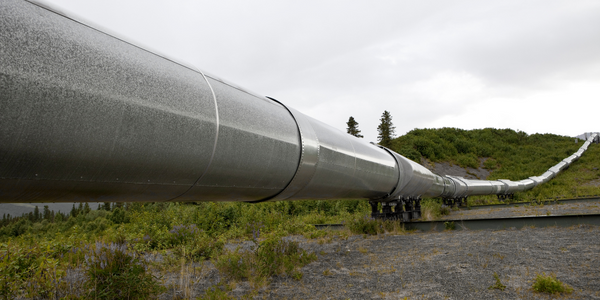公司规模
1,000+
地区
- America
国家
- United States
产品
- COMSOL Multiphysics®
技术栈
- Multiphysics Simulation
- Heat Transfer in Fluids
- Chemical Reactions
- Structural Mechanics
- Mass Transport and Fluid Flow
实施规模
- Enterprise-wide Deployment
影响指标
- Cost Savings
- Innovation Output
- Productivity Improvements
技术
- 分析与建模 - 数字孪生/模拟
- 分析与建模 - 预测分析
- 功能应用 - 远程监控系统
适用功能
- 维护
- 产品研发
用例
- 数字孪生
- 机器状态监测
- 预测性维护
- 远程资产管理
服务
- 软件设计与工程服务
- 系统集成
关于客户
Lawrence Livermore National Laboratory (LLNL) is a premier research institution located in California, USA. It is renowned for its cutting-edge research in various scientific fields, including materials science, astrophysics, and nuclear research. LLNL oversees the National Ignition Facility (NIF), which houses the world’s largest and most energetic laser system. This facility is instrumental in advancing our understanding of the universe through technologies like inertial confinement fusion (ICF). The laboratory employs a team of highly skilled researchers and scientists who are dedicated to exploring innovative solutions for complex scientific challenges. One of the key areas of focus at LLNL is the repair and maintenance of fused silica optics used in high-power laser systems. The laboratory leverages advanced simulation tools and techniques to optimize laser-material interactions, ensuring the longevity and efficiency of their laser systems. With a strong commitment to scientific excellence and innovation, LLNL continues to make significant contributions to various fields of research and technology.
挑战
California-based LLNL oversees the National Ignition Facility (NIF), home to the world’s largest and most energetic laser. The giant machine—with 192 separate beams and 40,000 optics that focus, reflect, and guide those beams— can amplify emitted laser-pulse energy by as much as ten billion times and direct it towards a target about the size of a pencil eraser. The laser produces temperatures, pressures, and densities that are similar to those found in the cores of stars, supernovae, and large planets. Astrophysics and nuclear researchers use the giant laser to better understand the universe, utilizing such technologies as inertial confinement fusion (ICF), where hydrogen fuel is heated and compressed to the point where nuclear fusion reactions take place. However, repeated use of this powerful laser can damage the optics within the system. “The optics can be quite expensive,” says Matthews. “The high-power laser light generated by the NIF can damage some of the fused silica optics, creating little pits in the surface—similar to the ding you get when a rock hits your car’s windshield. We do everything we can to repair and recycle the damaged ones.” An example of two damaged optic surfaces before and after repair is shown in Figure 1.
解决方案
Matthews and his team have used simulation to explore three techniques for repairing damaged optics: infrared (IR) pulsed laser microshaping/ micromachining, slow annealing, and laser chemical vapor deposition (L-CVD). In a first research cycle, they focused on the basic underlying physics and material science of how fused silica behaves when exposed to laser light at varying temperatures. There were several milestones in their temperature-tiered campaign: The first was to understand the thermalelastic response of the material up to the glass transition temperature of 1,300 K, where fused silica exhibits a sudden increase in elastic response and becomes less resistant to flow. They continued by examining the molecular relaxation of glass under viscous flow between the glass transition and the evaporation point at ~2,200 K. The final objective was to investigate the evaporation and redeposition of the material over temperatures between 2,200 and 3,400 K. To explore specific techniques for repairing the damaged optics, Matthews turned to the COMSOL Multiphysics® software. “I decided to use COMSOL to get a better understanding of what was going on,” says Matthews. “All the necessary physics were already available in the software, so I could readily try out ideas and avoid the time and effort that would be needed to develop my own code from scratch.” According to Matthews, COMSOL has been instrumental in helping them understand how lasers interact with fused silica, as well as in refining their specific repair methods. “A high-power laser system can’t tolerate much surface roughness in the optics. Controlling flatness to such high standards required extensive simulation,” he says. His simulations include heat transfer in fluids, chemical reactions, and structural mechanics, as well as mass transport and fluid flow.
运营影响
数量效益

Case Study missing?
Start adding your own!
Register with your work email and create a new case study profile for your business.
相关案例.

Case Study
IoT enabled Fleet Management with MindSphere
In view of growing competition, Gämmerler had a strong need to remain competitive via process optimization, reliability and gentle handling of printed products, even at highest press speeds. In addition, a digitalization initiative also included developing a key differentiation via data-driven services offers.

Case Study
Remote Monitoring & Predictive Maintenance App for a Solar Energy System
The maintenance & tracking of various modules was an overhead for the customer due to the huge labor costs involved. Being an advanced solar solutions provider, they wanted to ensure early detection of issues and provide the best-in-class customer experience. Hence they wanted to automate the whole process.
.png)
Case Study
Improving Vending Machine Profitability with the Internet of Things (IoT)
The vending industry is undergoing a sea change, taking advantage of new technologies to go beyond just delivering snacks to creating a new retail location. Intelligent vending machines can be found in many public locations as well as company facilities, selling different types of goods and services, including even computer accessories, gold bars, tickets, and office supplies. With increasing sophistication, they may also provide time- and location-based data pertaining to sales, inventory, and customer preferences. But at the end of the day, vending machine operators know greater profitability is driven by higher sales and lower operating costs.

Case Study
Predictive Maintenance for Industrial Chillers
For global leaders in the industrial chiller manufacturing, reliability of the entire production process is of the utmost importance. Chillers are refrigeration systems that produce ice water to provide cooling for a process or industrial application. One of those leaders sought a way to respond to asset performance issues, even before they occur. The intelligence to guarantee maximum reliability of cooling devices is embedded (pre-alarming). A pre-alarming phase means that the cooling device still works, but symptoms may appear, telling manufacturers that a failure is likely to occur in the near future. Chillers who are not internet connected at that moment, provide little insight in this pre-alarming phase.





